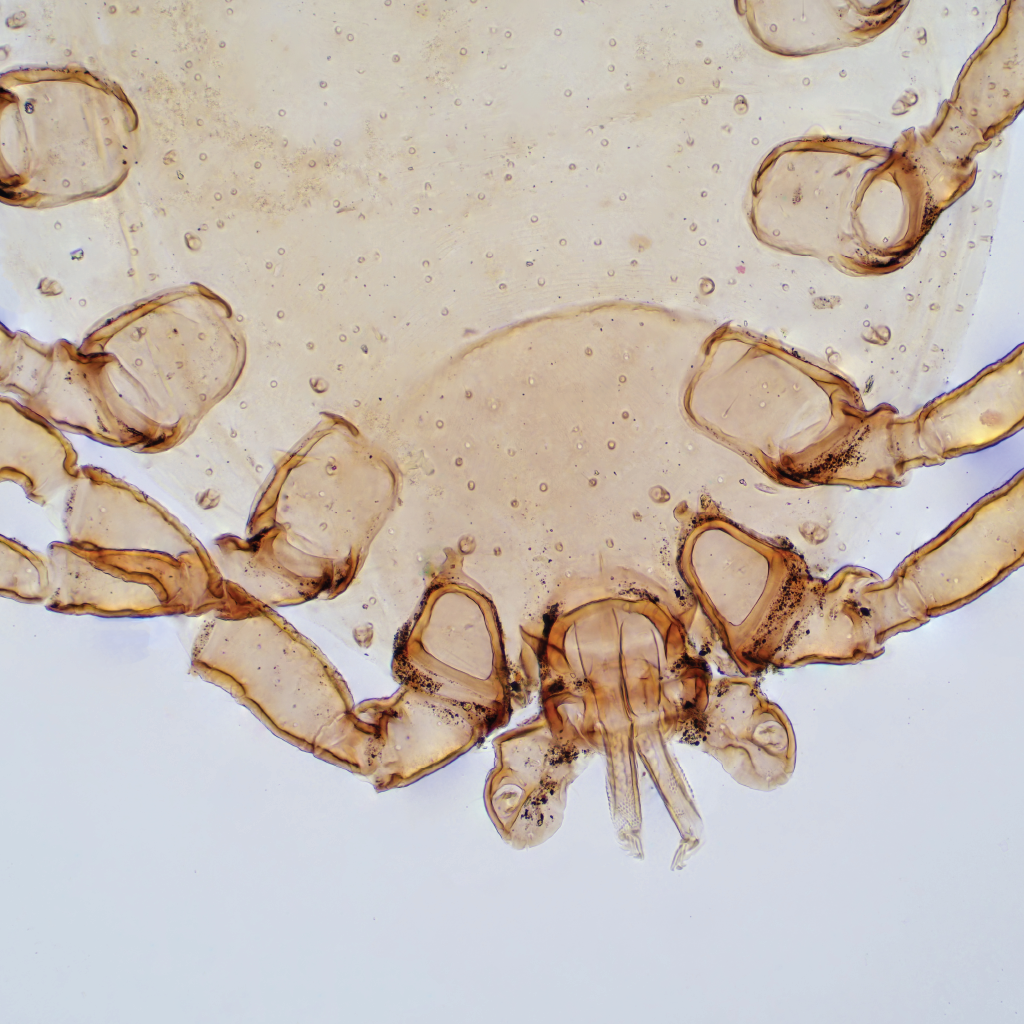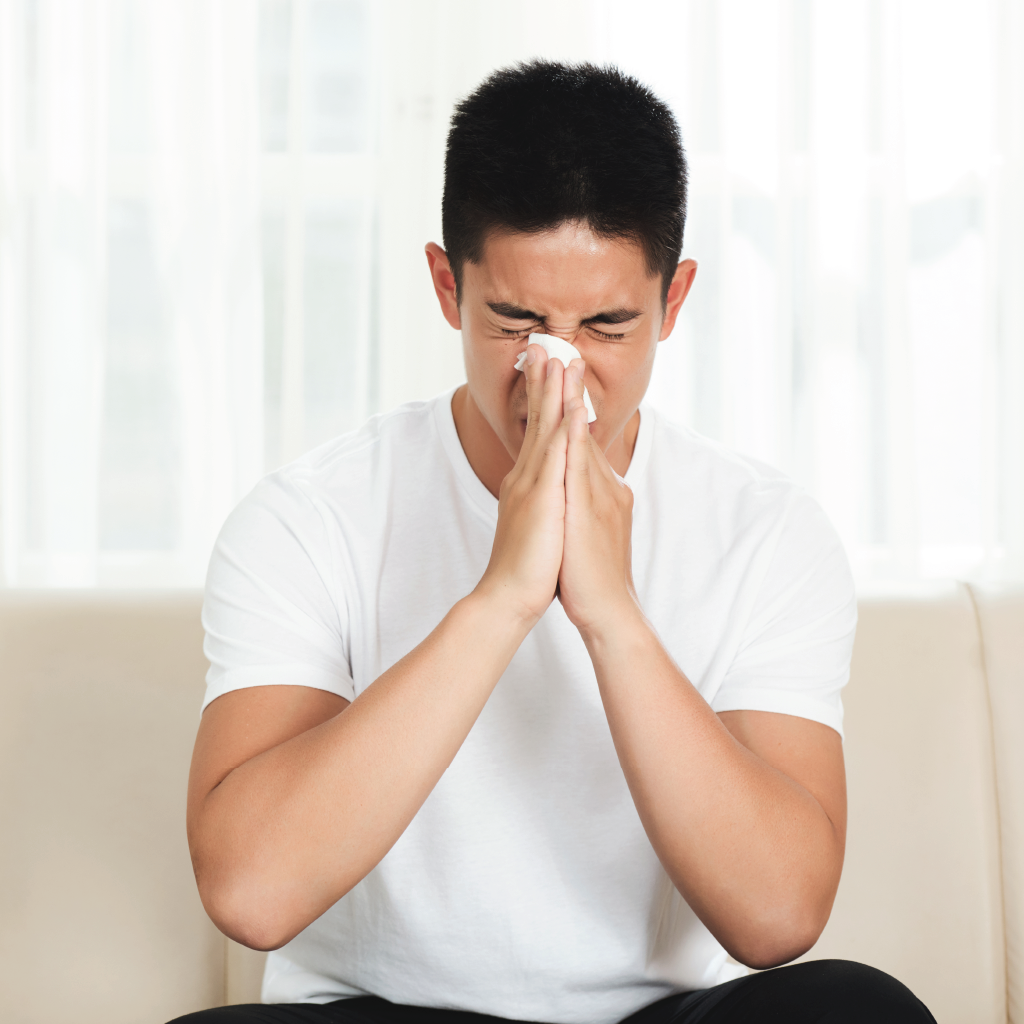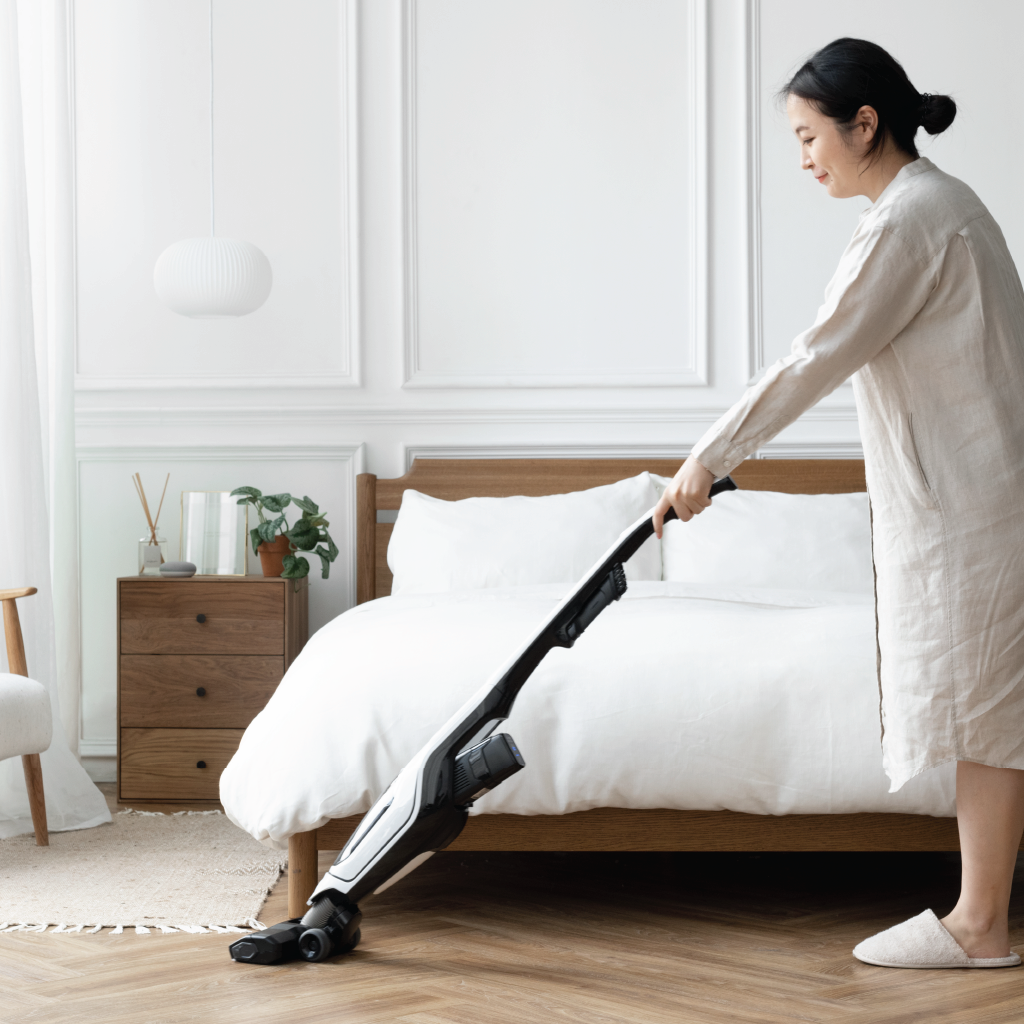Allergies to House Dust Mites
What are House Dust Mites?
House dust mites are one of the most common allergens. They are microscopic insects invisible to the naked eye. Mites grow well in warm (>20-25oC) and humid environments (70-80% humidity levels) and feed off fungi and skin flakes that we shed continuously. Mites are found in bedding,
carpets, soft furnishings and clothing. The allergen that may cause problems is present in the mite faeces.

What are the symptoms of Dust Mite allergy?
Common dust mite allergy symptoms include:
- Sneezing
- Stuffy or runny nose
- Cough with postnasal drip
- Itchy nose, mouth or throat
- Itchy, red or watery eyes
- Itchy skin
If your dust mite allergy triggers your asthma, you may also experience:
- Persistent cough
- Difficulty breathing or shortness of breath
- Chest tightness or pain
- Wheezing

How does a doctor diagnose Dust Mite allergy?
The doctor may suspect a dust mite allergy after discussing your symptoms and completing a physical examination. He may suggest a skin or blood test to assess for possible allergy to common environmental allergens including house dust mites.
- Skin Prick Test (SPT)
In skin prick testing, a small drop of the possible allergen is placed on your skin and the nurse will lightly scratch the spot with lancet. Allergy to the test item will show as redness, swelling and itching at the test site within 20 minutes. A positive SPT does not necessarily mean you have an allergy. The doctor will compare the skin test results with the time and place of your symptoms to see if the test results match the reported symptoms.
- Specific IgE blood test
Blood tests are helpful when people have a skin condition or are taking medicines that interfere with skin testing. As with skin testing, a positive blood test to an allergen does not necessarily mean that an allergen caused your symptoms.
Can House Dust Mite allergy be treated?
The first treatment for controlling dust mite allergy is to reduce exposure to dust mites as much as possible. However, it is impossible to eliminate dust mites from your environment. Medications in addition to environmental control measures may be needed to help control symptoms.
The following medications may help to improve nasal allergy symptoms:
- Antihistamines. This can be given in the form of tablets, syrups or a nasal spray.
- Corticosteroids. This is usually prescribed as a nasal spray.
- Decongestants. This is only for short term use and can be given in the form of drops, nasal spray, tablets or syrups.
- Leukotriene antagonists. This is usually used if there is concurrent allergic rhinitis and asthma or more severe allergic rhinitis in addition to other medications.
- Immunotherapy. Immunotherapy works by increasing the body’s tolerance to house dust mite allergens (desensitisation). Immunotherapy for children is usually prescribed as a sublingual (under the tongue) spray or tablet. Duration of treatment is usually three to five years. Immunotherapy is usually used when allergy symptoms are not well relieved by commonly used mediations.
How can we avoid or reduce the levels of House Dust Mites?
A major site of exposure to house dust mite allergen is in the bedroom. Since children often spend up to 10 hours or more each day sleeping, it is best to focus dust mite avoidance measures in the bedroom.
Remove soft toys and cushions from the bedroom. Keep the bedroom uncluttered and generally dust free. Washing of bedding weekly in hot water (>60∘C) will kill dust mites and wash away the allergen that they produce. If bedding cannot tolerate hot water washing, use a commercial product
formulated to kill dust mites in cold water. If washing normally, hot tumble drying of washed items for 10 minutes after they are dry, will kill dust mites. Dry cleaning is not as effective as it will kill house dust mites but won't remove the allergen they produce. Freezing non washable items for 24 hours also can kill dust mites, but this won't remove the allergens.
Regular vacuuming with a vacuum cleaner fitted with a HEPA filter may help reduce mite allergens in bedding, carpets, or rugs but this is not very efficient. Vacuuming alone without undertaking other measures will not reduce levels significantly. Having non-carpeted flooring and removing soft
furnishings such as curtains and soft toys will reduce the amount of house dust mite allergen. Buy washable stuffed toys, wash them often in hot water and keep them off beds or out of bedrooms.

Allergen proof covers for the mattress, bolster, quilt, blanket and pillow may reduce allergen exposure in bed. These covers, made of tightly woven fabric, prevent dust mites from colonizing or escaping from the mattress, blankets or pillows. Make sure they are removable and machine washable. The mattress cover should entirely encase the mattress. Mattress protectors which do not completely encase the mattress are not effective and should not be used.
Acaricide sprays are chemicals that are toxic to dust mites. This can be used to manage dust mites in household items that cannot be washed in high temperatures e.g. sofas, carpets. They only reduce dust mite numbers for short periods of time and must be applied frequently. Air filters do not alter dust mite levels in the environment as dust mite allergen does not remain airborne for any length of time.
Common living areas e.g. the hall or dining rooms with potential dust mite reservoirs e.g. carpets, cushions can be managed the same way.
Having dust mites in the home doesn’t mean your house isn’t clean. In most areas of the world, these creatures live in every home, no matter how clean. Taking steps to minimize house mite exposure in the home will reduce symptoms of house dust mite triggered allergies in your child.
Common conditions managed by Dr Tang include asthma and lung disorders, sleep disorders, and allergy disorders.





